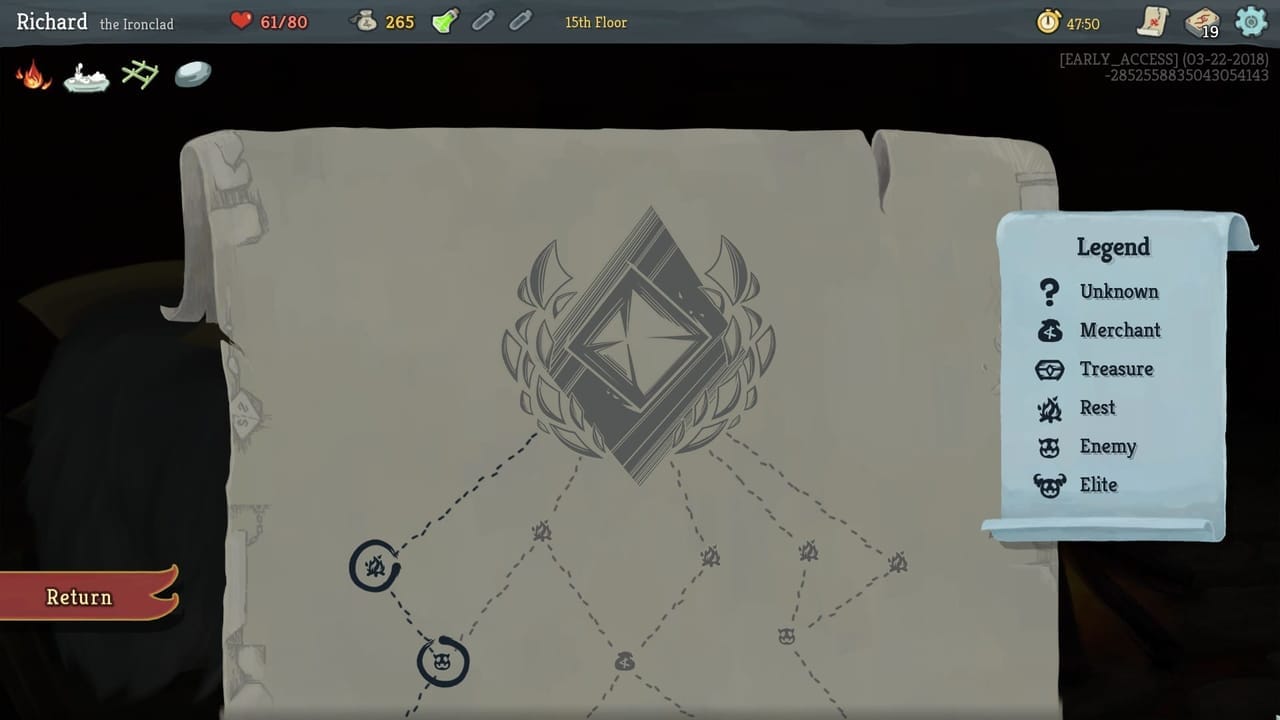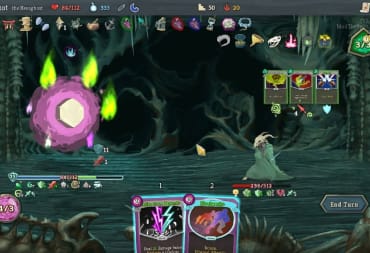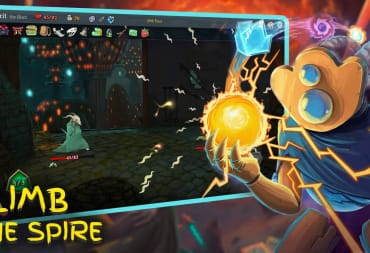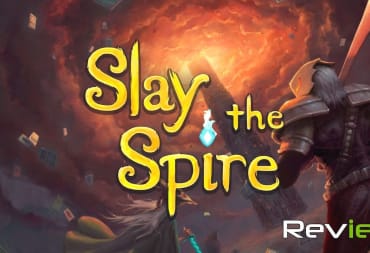The deckbuilder is a fairly recent subgenre of collectible card games. In most card games, players build their decks in advance before the game. The first deckbuilder to flip the script was Dominion in 2008, where players have to build their decks as they play. After Dominion, game designers attempted some cross-genre experiments, melding deck-building mechanics and RPG and roguelike elements. Mega Crit’s Slay the Spire is one of the most successful of these experiments so far.
Card games thrive on synergy. It's the combinatorial chemistry where game designers define the table of elements, but it’s up to the players to mix them up in creative, explosive ways. Sometimes the designers themselves cannot anticipate just how creative players will get coming up with combos. While still in Early Access, Slay the Spire sets a rock solid foundation for players to build upon.
You can play this turn-based roguelike deck-builder with two characters so far. The Ironclad is a warrior who is last of his breed and “sold his soul to harness demonic energies." The Silent is a “deadly huntress from the foglands who eradicates foes with daggers and poisons”. A third character is currently in the works.

The Ironclad is optimal for aggro builds where you try to deal as much damage as quickly as possible. It draws on several buffs to build up your attack cards into massive onslaughts. That way you can annihilate your enemies before they even have a chance to react. The most common builds for the Ironclad involve cards with strength buffs and cards with demonic powers.
The Silent is optimal for defensive builds where you poison the enemies and let them die slowly. Meanwhile, you block their attacks and dish out some daggers and shivs. Of course, you can block with the Ironclad too, but with the Silent a block build is more conducive. The most common builds for the Silent involve poison cards and low-cost attacks.
The setting is a rather peculiar dark fantasy universe with a very distinctive style. It begins with the whale Neow that the characters meet before each run. If they made it to the first boss in the last run, you get to choose from a few bonuses that give you a slight edge. You choose a beginning point on the map and proceed to traverse it, making your own way through some forked paths.

The characters have their own unique set of cards, though the default decks share some resemblance, consisting mostly of attack and defense cards. These will work just fine for the first few battles, but it's merely the core around which you will build a proper deck. Along the way, you will complement them with better, more cost-effective cards. Especially power cards and skill cards that increase buffs and add more interesting mechanics to mess around with.
You can usually add a card after each battle, choosing from three options, and it’s also possible to remove cards by using a merchant or a special encounter. The first impulse is to get as many cards as you can, but you soon realize that this is not advised. Less is usually more, as the synergy is diluted by too many cards.
Each turn starts with a given number of cards and at least three energy points. Cards can cost up to three energy points, but most of them cost one or two points and some cost zero. Unplayed cards are usually discarded at the end of the turn, and when the draw pile is over the cards from the discard pile are shuffled back as the draw pile, except for Exhaust cards, which are single-use only.

There are "relics" that you can collect along the way. These are permanent items that provide a passive bonus. Sometimes they affect gameplay in ways that might decide whether you lose or win. In the Standard mode, each character begins with one starter relic. The Silent begins with the Ring of the Snake, which enables you to buy two additional cards at the start of each battle. The Ironclad begins with the Burning Blood relic, which heals six health points at the end of each battle.
There are exceptions to much of what happens in a run, depending on the cards and relics you pick up along the way. Sometimes you can keep one or more cards at the end of the turn. Other times you can draw more cards or you start the turn with more energy points. It all depends on the cards you play and relics you have active. The game can often get very unpredictable with all these variables in play, which is excellent for replay value.
As punishing as it is inventive, Slay the Spire will not spare you. I started in the Standard mode with one character at a time and got wrecked within the first act quite a few times. Sometimes I got lucky and made it to the second act, only to be wrecked by the boss. This is a typically merciless roguelike, but it remains compelling as it kills you, pushing you to build a better deck and try harder.

I admit that I was only able to complete two runs so far. This was in the Daily mode, which adds random modifiers to make the game somewhat less punishing, more varied and fast-paced. As you keep dying, you will manage to unlock better cards and relics. You will also become more familiar with archetypes and mechanics and avoid items that will disrupt your game plan.
Yes, it can be a very punishing and frustrating game. Still, the fact that I didn't manage to finish a run in the Standard mode does not reflect badly on the gameplay itself. This is a skill-intensive card game with rich mechanics that are hard to master. It will only improve as I keep playing and improving my odds by unlocking better cards and relics. The amount of RNG is just right, and the setting is fascinating, with weird and original monsters and enemies. There is much potential here, though it could still use some further refinement, which is what Early Access is for.
I thoroughly enjoyed my time with Slay the Spire so far. I believe its potential is just starting to unravel. As you go on, the replay value goes through the roof, much like a spire would. Mega Crit has a bright future if they manage to keep the game fresh with new characters, cards, and relics. Who knows, maybe they could even consider a PvP version. There is definitely room for variety in the PvP card games market, though they might lose some of the magic in the process.
Our Slay the Spire preview was conducted on PC via Steam using a copy provided by the developers.
Previews you can trust: To ensure you're getting a fair, accurate, and informed review, our experienced team spends a significant amount of time on everything we preview. Read more about how we review games and products.
Have a tip, or want to point out something we missed? Leave a Comment or e-mail us at tips@techraptor.net













